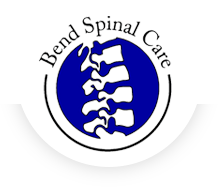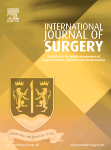Focused Shockwave Therapy (F-ESWT)
The Underlying Science of Shock Wave Therapy

While it may seem counterintuitive, a small amount of damage needs to be done to the body to prompt it to repair itself. Focused Shock wave therapy creates tiny ruptures in the capillaries that feed injured tissues. This prompts the body to start producing new blood vessels to replace the damaged ones. The tiny new blood vessels increase the blood supply to the injured area, increasing the flow of oxygen and nutrients necessary for healing.
Increased nutrient-dense blood flow is necessary for neovascularization to occur, to start and maintain the repair process of damaged tissue. The application of acoustic waves creates capillary micro-ruptures in tendon and bone and significantly increases the expression of growth indicators such as the eNOS, VEGF, PCNA and BMP. These processes stimulate the growth and remodeling of new arterioles. The new blood vessels enhance the tissue’s blood supply and oxygenation, resulting in accelerated healing of muscles, tendons, and bones.
Sufficient amounts of collagen are also necessary for tissue repair. Focused shockwave therapy hastens pro-collagen synthesis. The newly created collagen fibers are forced into a longitudinal structure, making tendon fibers denser and stiffer.
Trigger points are one principal cause of pain in the back, neck, shoulder, and limbs. They are palpable nodules in taut bands of muscle fibers that have extremely contracted sarcomeres. The dysfunctional sarcomeres contract so tightly that they begin to cut off their own blood supply. This causes the build-up of waste products which in turn, irritates the sensory nerve endings, causing even more contraction. This vicious cycle is referred to as a metabolic crisis. Although the precise medical effects of acoustic wave therapy are still unclear, it can be assumed that the delivered acoustic energy unblocks the calcium pump, thus reversing the metabolic crisis and releasing the trigger points.
How Does ESWT Treatment Reduce Pain?
The mechanism of action is based on shockwaves interrupting pain pathways of the inflamed nerves at cellular levels. This leads to restoration of healthy nerve function and promotes new blood vessel growth to facilitate natural healing.
Does Insurance Cover F-ESWT?
F-ESWT is a cost effective treatment but is not recognized by insurance. More info on F-ESWT is available at: https://www.shockwavetherapy.org/about-eswt/introduction/.
Disclaimer: Our healthcare practitioners use products and perform therapies cleared for general use by the United States Food and Drug Administration, but specific indications for treatment have not be evaluated and reviewed by the FDA. You are encouraged to consult with your primary care physician prior to undergoing a cell therapy.
Number of Treatments
The number of Focused Shockwave Therapy treatments required often varies depending on the injury severity and chronicity (how long you have had the condition). Many patients report that they start to feel relief and a decrease in symptoms after just the first couple of treatments.
Shockwave Therapy is so effective that in many cases only require 4-5 treatments, only once every week, which minimizes your time at therapy, and won’t interfere with your busy lifestyle.
Some chronic conditions may require between 8 to 10 treatments once per week, and this usually depends on how long you have had your condition. We will assess your condition and provide you with an estimate of the number of treatments that historically has been appropriate to effectively treat your condition and prevent it from returning.
After the treatment sessions are finished the injured area continues to heal for 6 to 18 weeks with maximal recovery occurring approximately 3 months after the treatment sessions end.
Contraindications:
- Coagulation disorders
- Use of anticoagulants (esp. Marcumar)
- Thrombosis
- Tumor diseases, carcinoma patients
- Pregnancy
- Polyneuropathy (in the case of DM)
- Acute inflammations
- Children in growth
- Cortisone therapy up to six weeks before first treatment in the target area
- Pacemakers
- Over metal implants
- What to do/what not to do before and after Focused Shockwave Therapy:
Please do not take anti-inflammatories or administer topical anti-inflammatories prior to the Shockwave treatment.
If you have had a cortisone injection you will need to wait 6 weeks post injection prior to commencing Shockwave Therapy.
Clinical Success Rate and Effectiveness
There have been more than 300 articles published on Shockwave Therapy, including 10 double-blinded, randomized, controlled trials. The evidence for the use of Shockwave Therapy is overwhelming.
Recent clinical studies suggest there is an 80% – 85% chance this technology will improve your condition provided you are a good candidate for Shockwave treatment
- 91%IMPROVEMENT FOR CALCIFIC TENDINITIS
- 83%IMPROVEMENT FOR CALCIFIC TENDINITIS OF THE SHOULDER
- 77%IMPROVEMENT FOR TENNIS ELBOW
- 76%IMPROVEMENT FOR ACHILLES TENDINOPATHY
- 90%IMPROVEMENT FOR PLANTAR FASCIITIS
- 80%IMPROVEMENT FOR RADIAL AND ULNAR HUMERAL EPICONDYLITIS
- 88%IMPROVEMENT FOR PATELLAR TENDINITIS/ ACHILLODYNIA
- 80%IMPROVEMENT FOR MYOFASCIAL TRIGGER POINTS
How Safe is Focused Shockwave?
Very Safe! Focused Shockwave Therapy has no long-term side effects or damages. Some short-term discomfort is felt during the treatment and some patients may experience temporary soreness, tenderness or swelling for a few days following the procedure. Others may experience mild bruising, tingling or numbness over the area of treatment. Upon completion of your treatment, you can return to most regular activities almost immediately, however for certain conditions we may advise you to avoid heavy strenuous activities for a day or two. Occasionally, pain or discomfort may persist for a few days following treatment, but no serious complications or side effects have been reported.

Combined Technologies Bring Fast Therapeutic Results
EPAT, also known as radial, shock wave therapy, uses acoustic pressure waves to enhance blood circulation to targeted tissues. These speeds up the delivery of oxygen and nutrients to damaged tissues and stimulates cellular metabolism, to speed up the healing process.
Focused ESWT is used as a regenerative treatment for damaged tendon, muscle, and bone tissue. This technology produces high frequency sound waves to stimulate the body’s own reparative mechanisms. It is especially effective for chronic degenerative tendon disorders and myofascial pain syndrome.
Focused Shockwaves can encompass areas with less concentration and energy.
Some facts about shock wave therapy
While there is no perfect regenerative modality, research shows F-ESWT to be the leading regenerative treatment, surpassing injections of stem cells and platelet-rich plasma (PRP).
- Shock wave therapy is completely non-invasive, with no known side effects.
- ESWT is the best treatment modality for tendon injuries.
- ESWT is second only to ultrasound guided dry needling for treating myofascial pain and releasing myofascial trigger points.
The advent of new technologies over the past several years has opened a vast range of possibilities for therapeutic, non-invasive, and non-pharmacological methods to help patients manage pain and heal damaged tissues.
One promising new therapy that is getting the attention of the medical community is extracorporeal magnetic transduction therapy (EMTT/F-ESWT), a non-invasive treatment technology that uses electromagnetic fields to reduce pain and stimulate cellular neo-genesis in targeted tissues.
Bend Spinal Care is pleased to offer this groundbreaking new technology to our patients to treat a variety of conditions, including joint and muscle disorders, bone fractures, athletic injuries, and chronic pain conditions.
F-ESWT and Chronic Inflammation
F-ESWT can be used to reverse chronic inflammation that occurs when the inflammatory response is not completely halted. Chronic inflammation can damage healthy areas of the body, causing chronic pain. F-ESWT stimulates mast cells to release pro-inflammatory compounds like cytokines and chemokines. This stimulates the regeneration of healthy cells and helps restore normal healing.
F-ESWT and Tendon Healing
F-ESWT can help the body to produce more collagen. Collagen is a protein found throughout the body that gives tendons and ligaments their structure. The collagen fibers produced by the body after shock wave therapy are forced into longitudinal structures that make tendons stiffer and denser, stopping and reversing tendon degeneration.
F-ESWT and Trigger Point Therapy
Trigger points are tightly contracted bands of muscle tissue that are the principal cause of pain in the back, neck, shoulders, and limbs. Their dysfunctional sarcomeres contract so tightly that they begin to cut off their own blood supply. This causes a buildup of waste products, which in turn irritates the sensory nerve endings, causing even more pain. This vicious cycle is called a metabolic crisis.
Although the precise mechanisms of F-ESWT’s effect on trigger points is unclear, it is assumed that the delivered acoustic energy unblocks the calcium pump in the sarcomere, causing the trigger point to release and immediately stopping pain.
F-ESWT and Motor Disorders
F-ESWT can be successfully used to treat and manage spasticity after stroke, and in motor disorders such as cerebral palsy, multiple sclerosis, dystonia, and severe writer’s cramps.
Focused Extracorporeal Shock Wave Therapy works for many treatable medical conditions as a non-invasive solution for treating and healing pain and is steadily increasing in use in the United States. And for a variety of good reasons.
Chronic pain because of injury or illness is one of the most difficult conditions for so many people to live with daily. It affects every aspect of a person’s day-to-day life and is also incredibly taxing on mental health and wellbeing.
Data from the CDC (Centers for Disease Control and Prevention) estimates that more than 20 percent of adults in the United States struggle with chronic pain.
All too often, people think their only option is to take pain medication, undergo a costly, and sometimes traumatic surgical procedure, or just grin and bear the pain as they try to get on with their daily duties and responsibilities.
There is, however, another nonsurgical way to treat pain and avoid having to take potentially addictive prescription pain medications.
Resources & Studies:
- "Shock Waves In The Treatment of Stress Fractures."
- "Extracorporeal Shock Wave Therapy Accelerates Regeneration After Acute Skeletal Muscle Injury."
- "Extracorporeal Shock Wave Therapy is Effective in the Treatment of Bone Marrow Edema of the Medical Compartment of the Knee: A Comparative Study."
- "Extracorporeal Shock Wave Therapy in the Treatment of Primary Bone Marrow Edema Syndrome of the Knee: A Prospective Randomised Controlled Study."
- Extracorporeal shock wave treatment can normalize painful bone marrow edema in knee osteoarthritis: A comparative historical cohort study.



